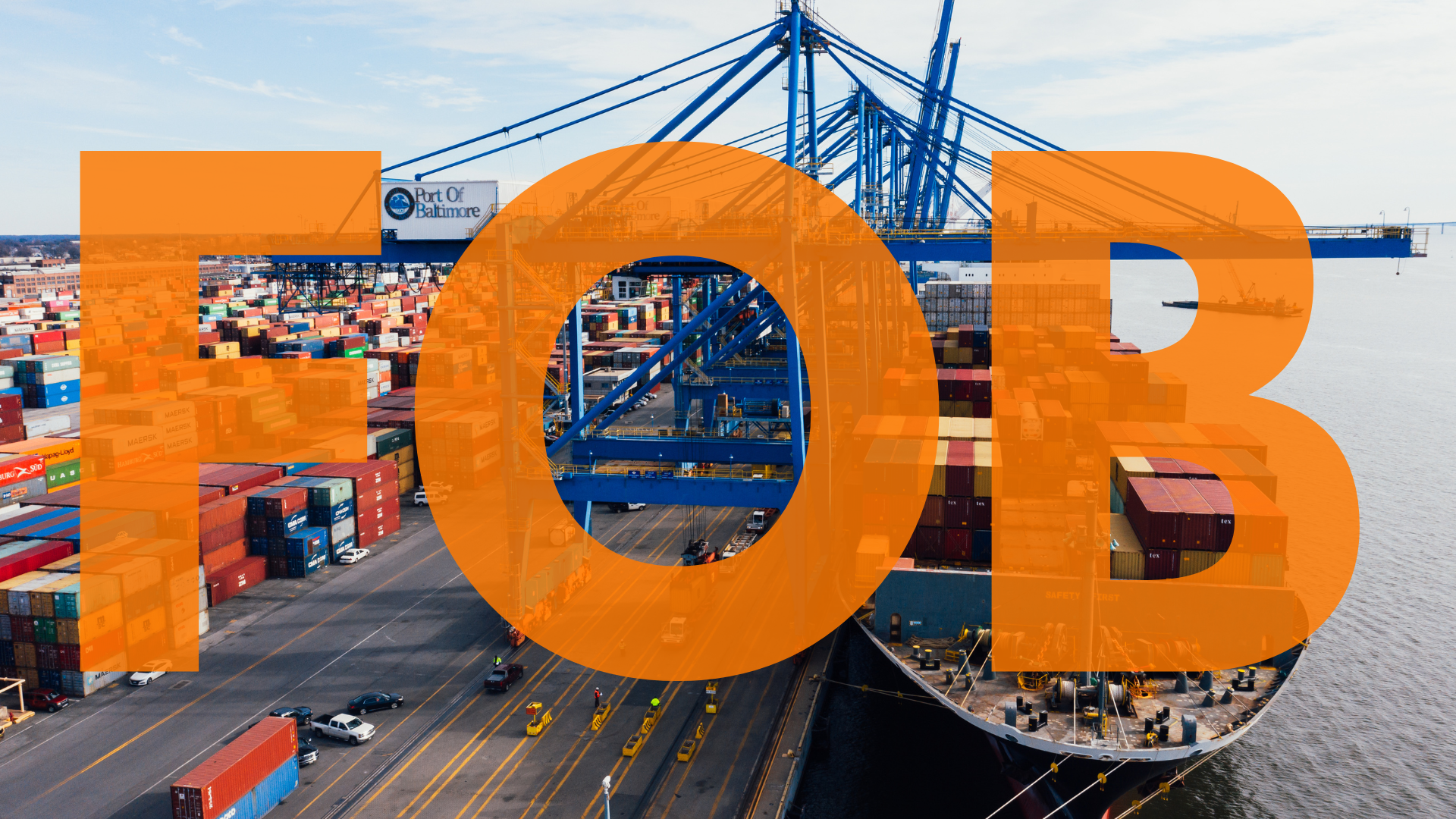
When importing goods, shipping terms are more than just legal fine print — they directly impact costs, risk transfer, transparency, and the flexibility of your entire supply chain. For mid-sized companies sourcing internationally, the Incoterm FOB (Free on Board) offers clear advantages: more control, better planning, and often significant cost savings. Especially in times of unstable supply chains and rising logistics costs, FOB becomes a real lever for supply chain optimization and creates transparency in all planning scenarios along the value chain.
What Does FOB Mean in Practice?
Under an FOB agreement, the supplier’s responsibility ends once the goods are loaded onto the buyer’s designated vessel in the country of origin. From that point, the importer takes over:
- responsibility
- risk
- and, most importantly, control
of the remaining transport process.
This isn’t just a legal transfer point — it’s a strategic advantage for any business that wants full control of its supply chain.
Why FOB? The 6 Key Benefits at a Glance
✅ 1. Choose Your Own Freight Forwarder and Route
With FOB, importers select their own freight forwarders, carriers, or consolidators. This provides flexibility, often leads to better rates -and most importantly- ensures reliability through trusted partners and familiar structures. A big plus for mid-sized companies that rely on established logistics networks or framework agreements: FOB enables them to make the most of these instead of depending on unfamiliar suppliers’ service providers.
✅ 2. Transparent Cost Structure and Stronger Negotiating Power
Die Lieferbedingung FOB sorgt für volle Transparenz bei den Transportkosten. Die Frachtraten verhandelt der Importeur direkt – ohne versteckte Aufschläge oder Zwischenmargen des Lieferanten. Durch ein Tendermanagement, kann man die Laufzeit der Rate und der Frachtnebenkosten optimiert verhandeln und festlegen.
A win for procurement teams:
Costs become predictable, individual services like ocean freight or pre- and on -carriage are clearly itemized- increasing pricing and budgeting accuracy.
✅ 3. Clean Tax Handling and Often Deductible
An often-overlooked benefit: FOB-related transport costs are frequently tax-deductible when incurred for business purposes. These costs can also be assigned directly to specific products — a clear advantage for cost accounting and product calculation. Modern SCM tools can further support product-level cost tracking and allocation.
Input tax deduction for imports: What applies?
Businesses entitled to deduct input tax can reclaim the VAT charged to them — as long as the purchased goods or services support their taxable output sales. This applies to import VAT on goods from non-EU countries if those goods are intended for business use (§15(1) No. 2 German VAT Act).
Important: VAT law does not always specify the exact point at which input tax becomes deductible. What matters is who has control over the goods at the relevant time — only that party is entitled to the deduction. The German tax authority follows court rulings on this: the place of supply rules (Section 3.12 para. 7 of the VAT Application Decree) also determine when delivery takes place for tax purposes.
✅ 4. Greater Supply Chain Transparency
With FOB, the importer doesn’t just manage the transport – they gain real-time data access. GPS tracking, ETA forecasts, customs clearance status – it’s all instantly available. The result: greater supply chain visibility, fewer surprises, and faster reaction times. For teams aiming to act proactively in procurement and logistics, this is a game-changer.
✅ 5.Better Use of ERP and SCM Systems
When you control the shipping process, you can feed digital tools like SAP, Microsoft Dynamics, or specialized SCM platforms with targeted, relevant data. Information such as expected arrival dates, actual transport durations, costs, and live shipment statuses can be seamlessly integrated into your systems. Item-level details and quantities of incoming orders also flow directly into SCM systems.
This allows for automated order planning, improved demand forecasting, real-time ERP monitoring, and invoice verification without manual intervention.
Conclusion: FOB supports a digital supply chain by aligning real-world operations with your IT systems.
✅ 6. Flexibility in Ports and Routes
FOB gives you the flexibility to respond to seasonal volumes, port congestion, or alternative consolidation hubs. In case of production delays, you can easily adjust shipping methods to meet customer deadlines. The importer decides when, where, and how goods enter their network. This helps during supply bottlenecks and supports the development of resilient logistics strategies — particularly valuable for growth-focused mid-sized companies. Of course, an SCM system enabling real-time order-level communication with all parties involved makes this even more effective.
Who Should Consider Using FOB?
The FOB shipping term is particularly well-suited for:
- Mid-sized companies with in-house procurement or logistics teams
- Buyers with access to freight networks or forwarding partners
- Firms looking to actively manage and digitize their supply chain
- Executives seeking to analyze and optimize cost structures
Conclusion: More Control, Better Data, Less Risk
FOB gives importing mid-sized businesses a strong foundation for a modern, transparent, and controllable supply chain. For those who see global sourcing not just as a cost center, but as a strategic driver, FOB is a must. Combined with well-integrated ERP and SCM systems, FOB can unleash its full potential — making your supply chain not only more stable, but also smarter.

Evaluate Your Current Setup: How Much FOB Is Already in Your Supply Chain?
Switching to FOB doesn’t have to be complicated, but it should be strategically planned. Our recommendation: collaborate with your procurement, logistics, and IT teams to assess where you already use FOB, and where a shift might be beneficial.
